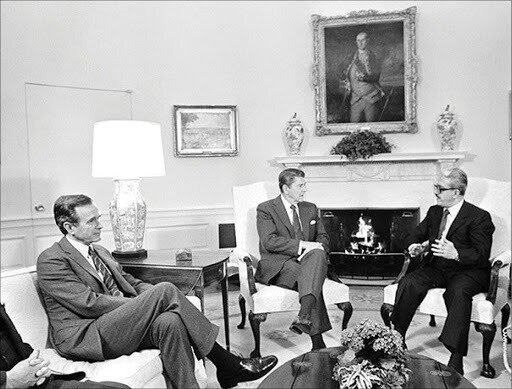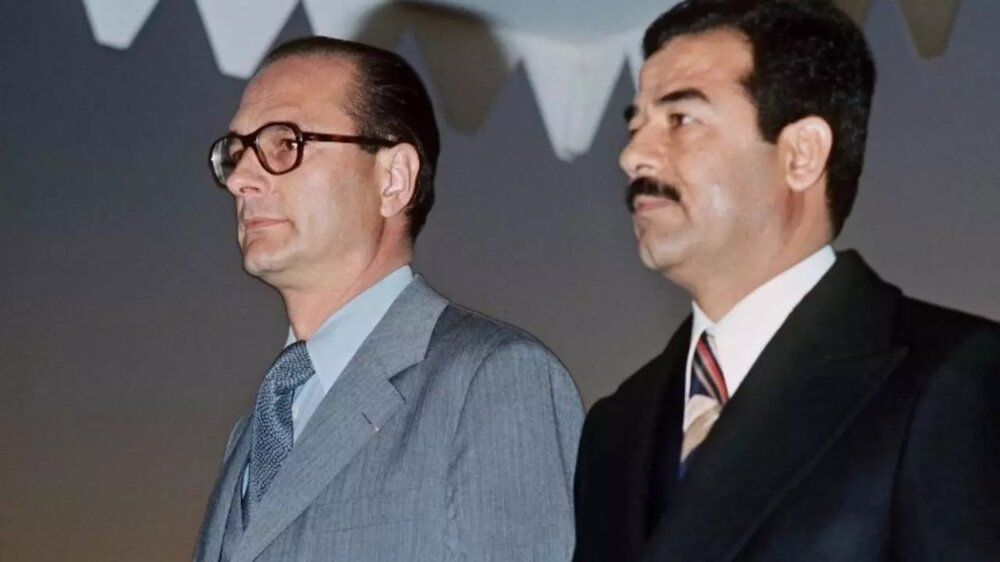
TEHRAN, Sep. 22 (MNA) – During the eight years of the Imposed War (1980-88) against Iran, many countries provided financial and military aid to former Iraqi dictator Saddam Hussein, with US, France, and Germany as major contributors.
The following is the list of the countries which aided Iraq during the (1980-88) Imposed War against Iran:
The United States:
The United States was Saddam's most important encourager to attack Iran. With the fall of the imperial regime in Iran, the Americans had no more access to the vast oil resources of our country, and immediately after the victory of the Islamic Revolution, they started their hostile campaigns and attacks against Iran. The failed Tabas Military attack, the Nojeh coup, and dozens of other plots were some of the US government's anti-Iran moves at the time.
When the Americans failed in all these plots, they encouraged the then Iraqi President Saddam Hussein to attack Iran.
In the second year of the war, when the Islamic army ousted the occupying forces, the US government simultaneously launched four operations in support of Saddam and against Iran:
1) Operation Staunch: Diplomatic attempts to identify the entry points of weapons into Iran and prevent the shipment of military equipment to the country
2) Financial operations: Efforts to meet the financial needs of Iraq through American companies
3) Intelligence operations: Providing military information on Iran to Iraq
4) Anti-Iranian operations in international organizations: Condemnation of Iran in these organizations and preventing Iranian officials from conveying their rightful messages to other countries.

The Soviet Union:
A major part of the weapons Iraqis needed during the war was supplied by the Soviet Union. The country greatly assisted Saddam in the war by providing him with modern equipment and weapons.
The most advanced warplanes, helicopters, tanks, and other such equipment were delivered to Iraq by the Soviet Union during the eight-year war.
Russian military commanders also trained Iraqi commanders and taught them ways to counter the Iranian army and the best methods and tactics to attack Iran.

Europe:
France and Germany aided Iraq more than any other European country. Super Étendard carrier-borne strike fighter aircraft and laser missiles – one of the latest achievements of the French military industry – were provided to the Iraqi army. Due to their high cost, Super Étendard aircraft were leased to the Iraqi army so that Iraqi pilots could easily use them to bomb Iranian soldiers and cities.
When all this aid failed to save Saddam's defeated army, Germany rushed to Saddam's aid by sending chemical weapons, enabling Saddam to use 6,000 tons of chemical bombs against the Iranian people. Saddam's army killed 1,100 people in Sardasht and other parts of Iran and 5,000 others in Halabja using chemical weapons.
Italy and Belgium were other supporters of Iraq in the war against Iran by providing the country with advanced anti-tank missiles and helping Iraq build long-range artillery and strengthen other parts of its military.

Arab countries:
Home to the world's largest oil and gas resources, these Arab countries were Iraq's main financial and manpower aid.
These Arab countries also deployed war prisoners from Jordan, Egypt, Morocco, Sudan, Somalia and the Persian Gulf Arab states to fight in the Iraqi army.
The airspace of these countries was also under the control of Iraq during the war, and Iraqi planes used their airspace to attack critical areas in the Persian Gulf, the Strait of Hormuz, and the southern provinces of our country.

Other countries:
Countries such as Brazil and Argentina, which were relatively advanced in the military industry at the time, supplied weapons to Iraq. Some others such as Latin American and African countries either lacked the ability to aid Iraq or were neutral, such as Turkey and Pakistan.
During the war, 50 countries directly supported Saddam. I will give just a few examples to better clarify the situation: At the beginning of the war, the United States said that it did not directly support Saddam, but Imam Khomeini (r.a.) said from the beginning that Saddam was a lunatic and a US pawn – a fact that became clear after the presence of US bases in Iraq and Egypt was revealed.

In Karbala 4 and 5 operations, the Soviet Union provided 150 tanks to Iraq; the French delivered their first long-range aircraft to Iraq, and the Germans provided Iraq with both chemical and nuclear weapons and technology. Kuwait, the UAE, and Saudi Arabia all contributed $80 billion to Saddam, while Iran had an annual budget of only $7 billion during the war. These figures clearly show our situation during the war and show that it was only through our resistance spirit and ceaseless efforts that we managed to stand against the enemy and win the war.
The excerpt is taken and translated from the Islamic Development Organization Information Database, The Role of Countries in the Iraq-Iran War, Hossein Eslafi, 22 Sep. 2009.





